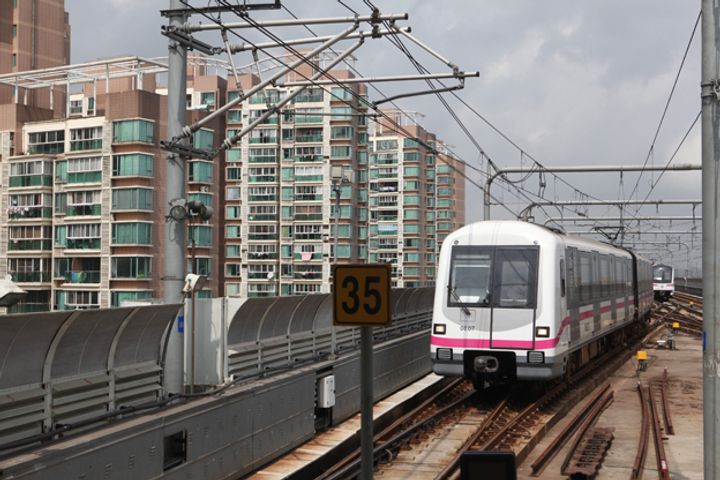 Shanghai to Invest USD43.3 Billion in Subway Expansion Over Five Years
Shanghai to Invest USD43.3 Billion in Subway Expansion Over Five Years(Yicai Global) Dec. 19 -- Chinese authorities have earmarked CNY298.3 billion (USD43.3 billion) for Shanghai's subway system over five years, expanding the eastern city's network to 27 lines with over 1,100 kilometers of track.
The subway will connect Hongqiao Airport, Pudong Airport, Shanghai South Railway Station, Shanghai East Railway Station and other transport hubs by 2023, according to a document on China's National Development and Reform Commission's website. The city's municipal and district governments will bear some 45 percent of the total cost while the remaining part will come via bank financing.
Shanghai government has been considering a rapid transit connection between the city's two airports for many years to better serve citizens and the development of the Yangtze River Delta, Mayor Ying Yong said in October.
Taicang and other cities nearby are also actively planning to build city railways connected with Shanghai's subway, Yicai Global learned.
The development of railways in major urban centers has greatly shortened commute times between outer suburbs and city centers, creating suburban areas where people can live, Hu Gang, a professor at Jinan University and president of the South China Urban Research Association, told Yicai Global. Convenient rail transit will attract more people to move to suburbs where there is adequate land, cheap housing and a good environment.
The spread of the population and industry will reduce pressure on traffic, the environment and house prices in key cities while optimizing the spatial pattern of big urban areas, Hu added.
Developments in First, Second-Tier Cities.
Other new plans for rail transit network expansions were unveiled in the cities of Chongqing, Hangzhou and Jinan earlier this month.
Chongqing will develop a 486km-long orbital traffic network and build 70.5 km of new subway lines. The total investment is CNY45.6 billion and 40 percent will come from the government. There are also plans for 68 km of extra subway lines in Hangzhou and 36.4 km in Jinan.
Cities that have approved rail transit plans in the second half of this year are all first and second-tier cities with large urban populations.
Building subways in some third and second-tier cities may put pressure on local financial institutions because of the small population and lower utilization. However, there is still much room for growth in major urban rail transit networks as populations in big cities continue to grow, a subway system industry insider told Yicai Global.
The lower traffic on many routes in third and weak second-tier cities will generate limited advertising revenue or land appreciation compared with those in big cities where populations and traffic are larger, he added. Subways will effectively meet people's travel needs and create both economic and social benefits for major urban centers so first and second-tier cities are the focus for this round of investment.
Plans for expansions in Hefei, Xi'an, Wuhan, Chengdu and other cities are also in the works.
Cities applying for urban rail construction should have over CNY30 billion in general public budget revenues, and over CNY300 billion in regional gross domestic product as well as urban populations of more than three million, the State Council clarified in a document issued in July.